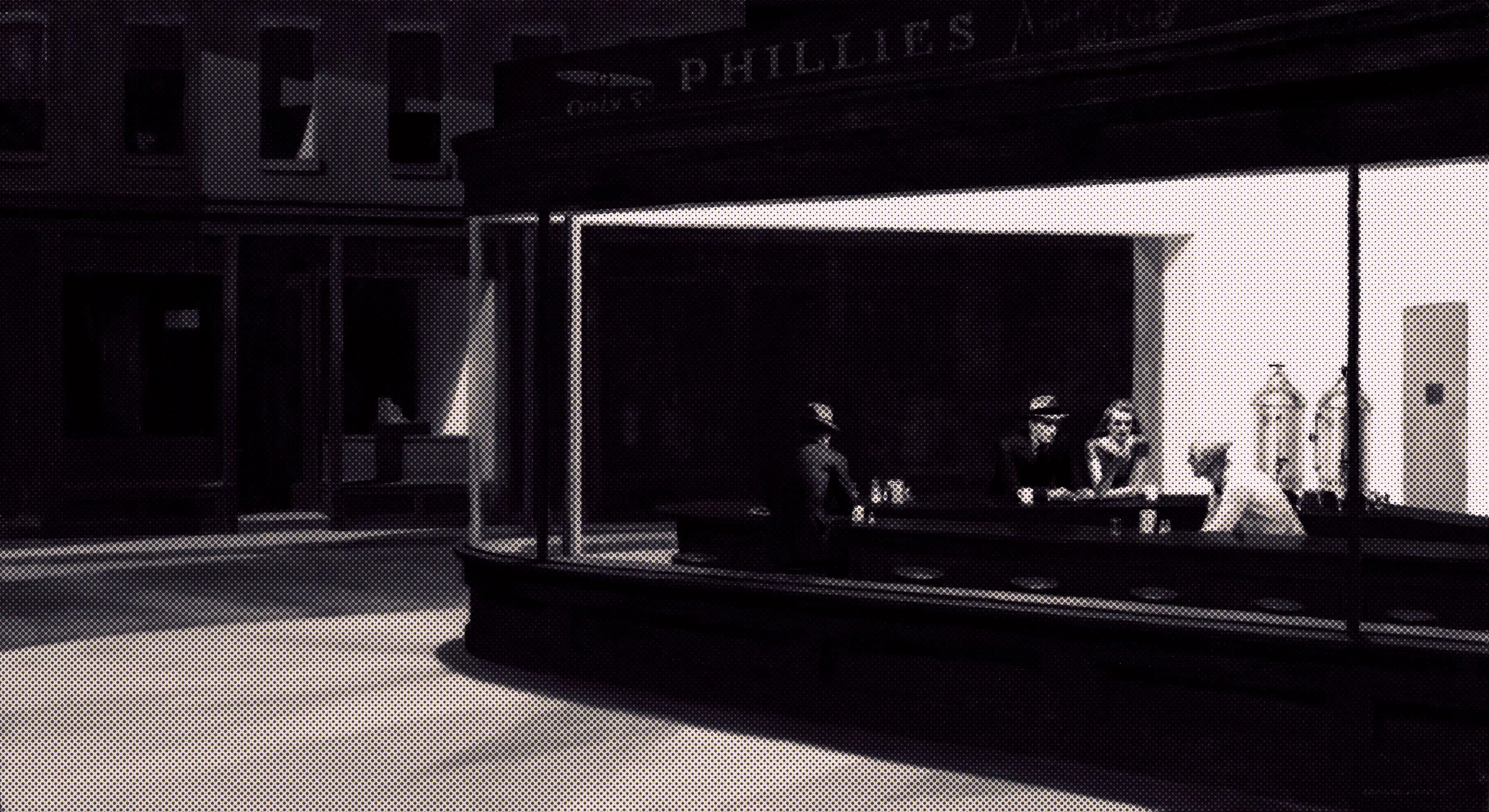A Jambalaya.
ORDER #002
♪ The Jukebox is now playing: Jambalaya (On The Bayou) by Fats Domino ♪
DIIIIIIING!
As you walk in, the first thing to the right is a bulletin board overflowing with local flyers for all sorts of services and upcoming events. Y’know: dry cleaners, a local production at the theatre, and — what’s this? — the ice rink is temporarily closed again? That might have to do with the incident last week.
Anyways, take a few steps inward and (still on the right) you’ll find the pick-up counter jutting from the wall: a wide rectangular window draped with strands of purple beads that shimmer like oil slicks in the light, concealing the kitchen’s inner workings. The chrome frame is cluttered with sticky notes, magnets, and random polaroids. Perched on the pick-up counter’s edge is a lucky cat, paw raised and swinging in eternal welcome to anyone stepping through the door. The curtain pulls back just enough when an order’s ready, and a dish slides out for a server to collect.
Behind that window, Griddle, Flip, and Burner prepare whatever the Diner decides to serve that night. At the back of the kitchen, the freezer door sits to the right, while a shadowed alcove to the left houses the drive-thru window.
Stepping away from the kitchen-window and back into the diner itself, past the pick-up area and against the back wall, is a door labeled STAFF. For some visitors, it’s the first thing they see when they walk in — it sits directly opposite the entrance — and they do not like it. No, not one bit. They can’t explain why, but they can’t shake the feeling the door is staring them down.
Inside that door lies the labyrinth of the Diner: take the hall on the left to go out back to the dumpsters and the great forest beyond. The one on the right? Janitor’s closet, manager’s office, storage room, and…
(Well. Best not to open that last one.)
To the left of the staff door, the diner counter stretches along the wall, long and sleek in the shape of a J, lined with an odd assortment of stools. At the curve of the letter, where it loops back towards the wall, sits the soda bar — a little oasis of effervescent delight; a neon sign flickers above, tracing the outline of a palm tree and desert oasis. The floats there are sublime: creamy, fizzy, unforgettable. Miss Maraschino often holds court there, a magician of drinks and conversation.
At the center, three parallel columns of booths stretch toward the kitchen window. The middle set of booths is conjoined by a divider running between them like a spine. The singular column sits flush against the window wall, curving into the corner before ending in a final row of booths nestled beneath another set of large windows. Behind that last row is a small nook: the jukebox corner. Together, the windows form an L-shape – think Nighthawks by Edward Hopper.
In a deep cavity down that final row of booths, tucked just out of sight from the rest of the diner, is a slim, short hallway. At first glance, it seems like a dead end, but a door sits on the right-hand side with no label. Nine times out of ten, it opens onto the bathroom.
The Diner’s color palette is predominantly shades of pink, violet, teal, cream, and buttery yellow, as though someone had filtered 1950s Americana through a technicolor dream. Yet, there’s another touch woven in: Middle Eastern rugs and North African kilims layered beneath select booths, some folded and stacked, others gently shifting. Their usual reds and ochres have been exchanged for the Diner’s own palette; cotton-candy pastels with fluorescent lime yellow veins pulsing through them.
Look at them head-on and they’re still. But from the corner of your eye, their intricate designs slide and turn like kaleidoscopes. Sometimes they wind up before the jukebox. Visitors might want to dance there, or lie down and close their eyes, letting the music serenade them to someplace else; someplace far, or maybe familiar.
Mismatched lamps hang and perch throughout, on tables, booth dividers, even window sills; each casting its own personality of light beneath whimsical, beaded shades. No single lamp dominates; all share the stage equally, glowing like old friends in conversation.
Upon closer inspection, it becomes clear: nothing here is consistent, yet everything fits. The Diner feels assembled more than designed; a patchwork of eras and sensibilities that somehow works together. Each object seems borrowed from another dream, another decade, another dimension. It’s a sincere mosaic of worlds, a jambalaya of lands dear and far apart. A marriage of the Wild Wild West and Cyrenaica of the East.
And if you listen closely, beneath the electric hum and the gentle hiss of the coffee pot, you might hear something faint; a tune caught between frequencies. Maybe the Diner’s heart beating. Maybe the crashing waves below. Maybe a story beginning again. And again. And again. And again.
— END OF ORDER —
Thank you for stopping by Jink’s.
Come again (if the road remembers you)
© 2025 Jaye Ink. All rights reserved.


